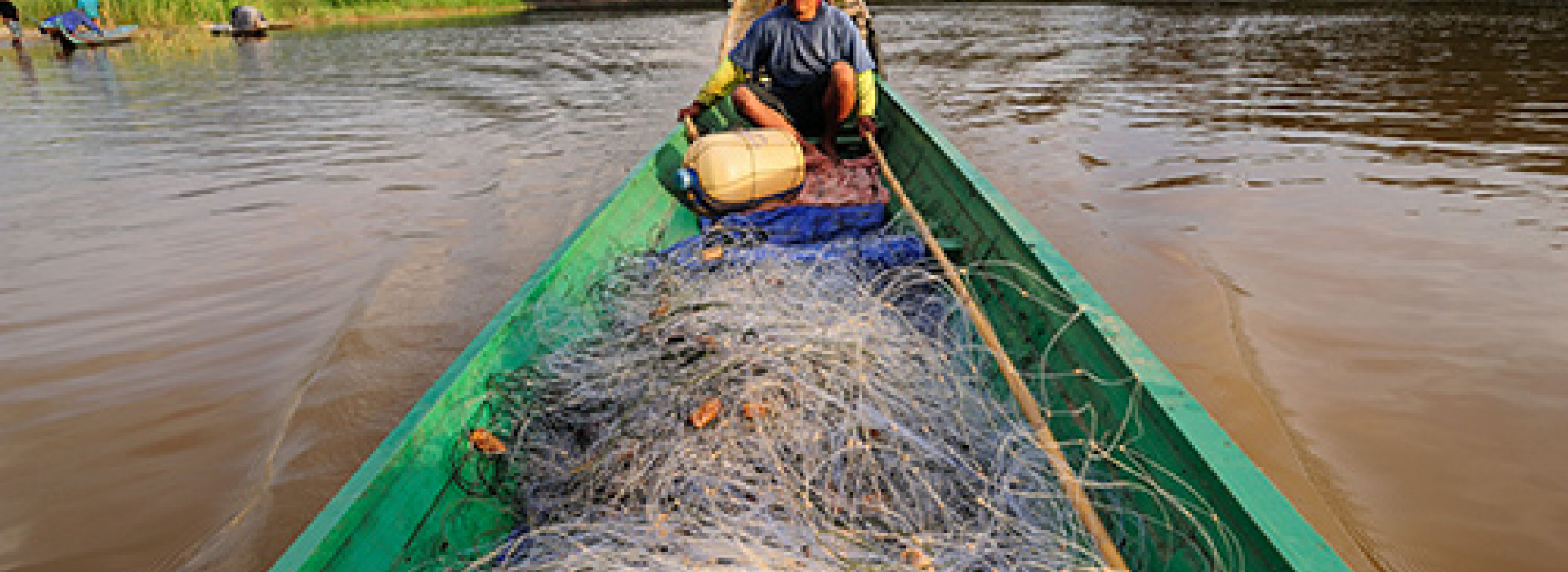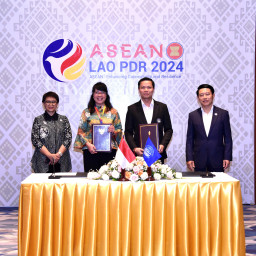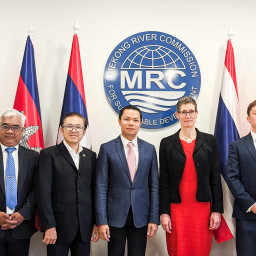MRC takes Don Sahong Project discussions to ministerial level
Vientiane, Lao PDR, 16 January 2014 -- Cambodia, Lao PDR, Thailand and Viet Nam today agreed to take the Don Sahong Hydropower Project discussions to the MRC Council, the higher ministerial level of the organisation comprising water and environment ministers of the Member Countries.
The Joint Committee Members of the four countries reached the decision at a Special Session held to discuss the Don Sahong Hydropower Project, located in Southern Lao PDR. On 30 September 2013, the government of Lao PDR notified the MRC of its decision to proceed with the development of the project and submitted it for the purpose of Notification under the MRC’s Procedures for Notification, Prior Consultation and Agreement (PNPCA). In their initial response, Cambodia, Thailand and Viet Nam stated that the project should undergo Prior Consultation. The Notification requires the submission of relevant information of the project to the notified countries, while the Prior Consultation requires a formal consultation and technical assessment.
After discussing the processes under the PNPCA, the meeting could not reach a consensus on whether the Notification or Prior Consultation process should be applied to the project.
The Don Sahong Project is located in the Khong District of Champasak Province in Lao PDR and situated on the 5-kilometre long Hou Sahong, one of the braided channels of the Mekong River approximately two kilometres upstream of the Lao-Cambodian border. At the meeting, Cambodia, Thailand and Viet Nam insisted that the project should undergo the Prior Consultation process. They raised particular concerns on the project’s potential impacts on fish migration routes as the Hou Sahong has been the major migration channel for fish to migrate in the dry season. Lao PDR clarified that two channels adjacent to the Hou Sahong, Hou Sadam and Hou Xangphuaek, can be used as alternative fish migration routes.
Head of the Cambodia delegation voiced concerns on adversely severe environmental and socio-economic impacts to immediate downstream areas in Cambodia.
“We view that the project documents are incomplete and the studies do not cover transboundary issues in countries such as Cambodia,” said Mr. Te Navuth, Head of Cambodia delegation. “If the alternative routes (for fish migration) don’t function well, the dam will have impacts on food security and nutrition on Cambodia,” he added.
Thailand shared such view questioning the viability of the alternative routes, and sought more consultation among Member Countries before the project would be done to clarify this and other issues.
“Thailand suggests that the project undergoes consultation to allow discussion among concerned parties and stakeholders,” said Thailand.
Viet Nam made similar views on social-economic and environmental impacts including changes to the river flows and sedimentation.
“We view that impacts on fisheries will be significant. For example, it is not possible to replace the modified channels for upstream fish migration with the existing Hou Sahong. Further study on social impacts from loss of fisheries should be conducted,” said Dr. Le Duc Trung, Head of Viet Nam delegation.
The delegation from Lao PDR insisted otherwise, saying the Notification is the appropriate procedure to inform the other countries about the project which they said neither a tributary or mainstream dam. The project will temporarily use only 15% of the Mekong flows and thus will have no significant impacts to the Mekong flow, say Lao PDR.
“The Hou Sahong has been a key migratory route in the dry season, but the fact is that there are several channels that support fish migration in the wet season and research indicates that other channels can be modified to improve migration in both directions all year round,” said Dr. Daovong Phonekeo, Head of Lao PDR delegation. “ Lao PDR has been transparent and has done what is required under the procedures under the 1995 Mekong Agreement,” he added.
Today’s Joint Committee Special Session gathered members of the JC, senior government officials from the four Member Countries and senior members of the MRC Secretariat.
For more information on the Don Sahong project and the Notification of Lao PDR please go to: http://www.mrcmekong.org/news-and-events/news/lao-pdr-submits-notification-on-don-sahong-hydropower-project/
Languages
Notes to editors:
The MRC is the intergovernmental body responsible for cooperation on the sustainable management of the Mekong Basin whose members include Cambodia, Lao PDR, Thailand and Viet Nam. It is established to promote cooperation amongst the Member Countries and thus it is not a supra-national or regulatory body.
In dealing with this challenge, the commission looks across all sectors including sustaining fisheries, identifying opportunities for agriculture, maintaining the freedom of navigation, flood management and preserving important ecosystems. Superimposed on these are the future effects of more extreme floods, prolonged drought and sea level rise associated with climate change. In providing its advice, the MRC aims to facilitate a broad range of dialogue among governments, the private sector and civil society.
The MRC Secretariat provides technical, advisory and administrative services to the member states. It facilitates regional meetings of the Member Countries and provides technical advice on joint planning, coordination and cooperation. It also works closely with the four countries’ coordinating bodies, the National Mekong Committees (NMCs), and other state agencies. Currently, the People’s Republic of China and the Union of Myanmar are engaged as MRC Dialogue Partners.
-END-





